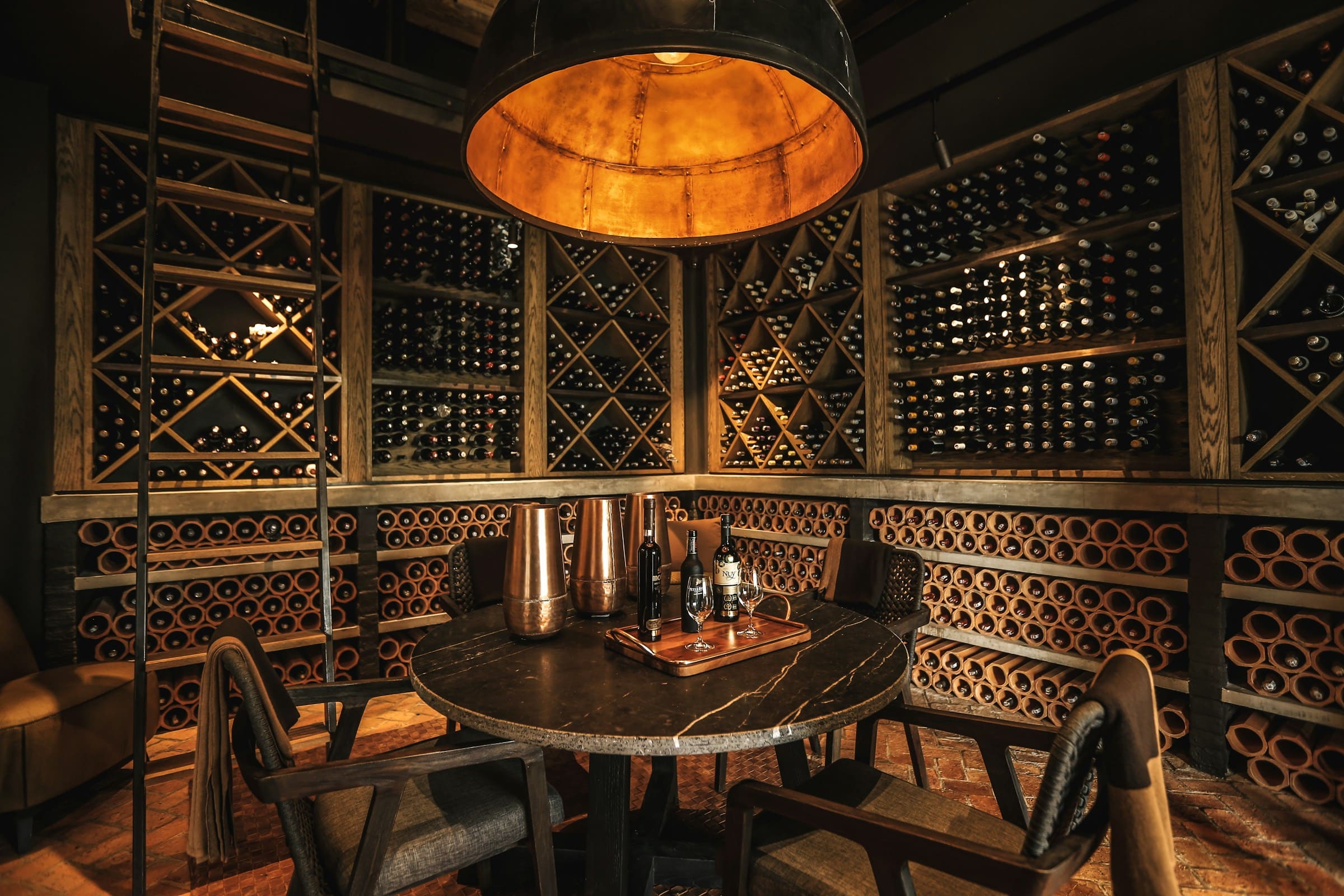How to Design a Home Wine Cellar for Optimal Temperature and Humidity Control?

Many wine enthusiasts understand that the quality of a wine is not just influenced by its origin or the type of grape used. Its preservation and maturation also significantly affect the taste. Hence, preserving bottles in a proper environment is necessary. The perfect place for this is a home wine cellar.
In this article, we’ll guide you through the process of designing a home wine cellar with optimal temperature and humidity control. We’ll cover everything from picking the right room, installing the correct cooling unit, ensuring proper humidity levels, to choosing the right insulation and wine racks.
En parallèle : How Can You Design a Sustainable and Budget-Friendly Modular Home Addition?
Selecting the Right Space for Your Wine Cellar
If you’re considering building a home wine cellar, the first thing you need to do is select the right space. It’s often ideal to choose a room in your home that has little sunlight exposure and is not subject to drastic temperature fluctuations. Basements are often a popular choice for wine cellars due to their constant, cooler temperatures.
The size of the room will also determine the capacity of your wine cellar. A room of about 3 x 3 meters allows you to store 500 to 1,000 bottles depending on the type of wine racks used. However, even smaller spaces can be efficiently used with the right planning and design.
Lire également : What’s the Best Way to Safeguard a Home Against Severe Weather Events Using Smart Technology?
Choosing the Right Cooling Unit for Your Cellar
After selecting the room, the next crucial step is to choose the right cooling unit. A common misconception among first-time wine cellar owners is that a standard home air conditioning system will work for a wine cellar. This is incorrect.
Wine requires a specific temperature range to mature properly- typically between 12 to 15 degrees Celsius. Standard air conditioning systems are designed to keep humans comfortable, not wine.
Well-designed wine cellar cooling units are engineered specifically to maintain the right temperature and humidity levels for wine storage. When choosing your unit, you should consider its compatibility with the size of your room, the number of bottles you intend to store, and the insulation of your cellar.
Maintaining Proper Humidity Levels in Your Wine Cellar
Humidity control is a critical element in wine storage. If the air in your cellar is too dry, the cork in your wine bottles can dry out, allowing air to enter the bottle and spoil the wine. Conversely, if the humidity is too high, mold can develop on your wine labels and corks.
The ideal humidity for a wine cellar is about 60 to 70 percent. To maintain this, you can use a humidifier or dehumidifier, depending on the natural humidity levels in your home. Some high-end wine cooling units also come with built-in humidity control.
Insulating Your Wine Cellar
The insulation of your wine cellar is key to maintaining a consistent temperature. Without proper insulation, your cooling unit will have to work harder to maintain the desired temperature, resulting in higher energy costs.
The walls, ceiling, and floor of your cellar should be insulated with a minimum of R-19 insulation. For the door, opt for a solid, insulated door, preferably with a good seal. If your cellar has windows, consider replacing them with insulated, double-pane glass to prevent heat and light from entering the room.
Selecting the Right Wine Racks
The last aspect to consider when designing your home wine cellar is the wine racks. They not only provide storage for your bottles but also contribute to the overall aesthetic of your cellar.
There are different types of wine racks available, from metal to wooden, and from stackable to wall-mounted. When choosing your racks, consider the size and shape of your room, the number of bottles you plan to store, and your personal design preferences.
Remember, the main goal is to secure your wine bottles in a horizontal position. This keeps the corks moist, preventing them from drying out and spoiling your wines.
Designing your own home wine cellar can be an exciting project. With the right planning and materials, you’ll have a beautiful space tailored to your taste and needs, where your wines can mature gracefully.
Ensuring an Effective Vapor Barrier for Your Wine Cellar
Before moving forward with the insulation and cooling system, it’s crucial to address another critical aspect of your wine cellar design – the vapor barrier. This is a material installed on the warm side of your walls, ceiling, and floor to prevent condensation from occurring. Without a vapor barrier, moisture can accumulate in the insulation and lead to mold growth and structural damage.
An effective vapor barrier is essential for maintaining the right temperature and humidity level in your wine cellar. It works in tandem with your insulation to provide a controlled environment for your wine collection. You can use a 6-mil plastic sheeting as a vapor barrier, but professional-grade vapor barriers offer better protection.
The vapor barrier should be installed on the warm side of your insulation. This means it should be between the insulation and the wall, floor, or ceiling surface that faces the rest of the house. The seams should be overlapped and sealed with a moisture-resistant tape to ensure a complete seal.
Remember, an efficient vapor barrier is as crucial as temperature and humidity control in your wine cellar. It helps safeguard your valuable wine collection from the damaging effects of moisture and condensation.
Lighting and Aesthetics of Your Home Wine Cellar
While the technical aspects like cooling units, humidity control, and insulation are undeniably important, you shouldn’t overlook the aesthetic aspects of your wine cellar either. Lighting plays a crucial role in setting the ambiance of your wine room, and it also serves a practical purpose.
The lighting should be bright enough to read wine labels but soft enough to maintain the ideal storage conditions. LED lights are a popular choice due to their energy efficiency and lower heat output. Recessed ceiling lights or track lights can provide general lighting, while accent lights can highlight special bottles in your collection.
For the overall design of your home wine cellar, consider the style that matches your home and personal taste. Whether you prefer a traditional, rustic style with wooden wine racks and stone walls, or a modern, sleek design with metal racks and glass doors, make sure it complements your home decor.
Also, don’t forget to plan for a tasting area if space allows. This could be a small table with chairs where you can enjoy your wine, making your home wine cellar not just a storage space, but also a place for enjoyment and relaxation.
Conclusion
Designing a home wine cellar is a rewarding project that allows you to protect your wine investment and enjoy your passion for wine. By carefully selecting the right space, installing an adequate cooling unit, maintaining proper humidity level, ensuring effective insulation and vapor barrier, choosing suitable wine racks, and considering the aesthetics, you can create a wine cellar that is both functional and beautiful.
Remember, the goal of a home wine cellar is not just to store your wine collection, but also to provide an ideal environment for your wines to mature gracefully. With meticulous planning and execution, you can build a wine cellar that serves as the perfect home for your wine, helping it to reach its full potential.
In the end, a home wine cellar is a testament to your love for wine. It’s a space where your precious bottles will live, breathe, and eventually, be savored. So, take the time to design it right and enjoy the fruits (or rather, the wines) of your labor!
